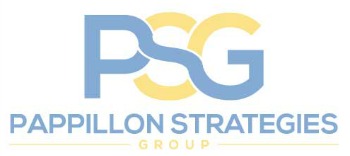
Seeing beyond the spoken word reduces implicit biases, assumptions, stereotypes, and micro-aggressive affections or tendencies. The nuanced understandings of nonverbal behavioral patterns, language barriers, and cultural intentions are enhanced.
Emotional Intelligence (EI) becomes a more conscious interactive response. Physiognomics makes people more adaptable to circumstances that are different from their own. Inclusive diversity functions and authentic leadership are hallmarks of world-class enterprise strategies.

In today’s expanding global economy, progressive individuals need as many tools as possible to reduce traditional language barriers and increase their abilities to understand in interpret what others say. Since incorrect interpretation of non-verbal aspects of communication often results in mistaken impression or misunderstanding, the value of being able to ‘read the body’ successfully is self-evident.

Body structure reveals truths about what we really mean when in a conversation, a negotiation or other interaction. While most people are intuitively familiar with some of the most basic ways of interpreting body language such as whether a person looks you in the eye or not, there is much more that can be learned.
The principles of Personal Dynamics cut across gender, cultural and ethnic differences.
What follows is an introduction to understanding how parts of the anatomy reflect human behavior and personality characteristics. This description is intended to provide a general indication of how behavioral tendencies and attitudes reflected inhuman body structure may be interpreted.
What Does the Body Say to Others?
The Head and Body Core
Head
The head is an indicator of the thought process and how a person receives information. The shape indicates how the person was received at birth and how they were nurtured in their infancy.
Forehead
An indicator of how knowledge was acquired – intuitive vs. formal education.
Eyes
It is said the eyes are the mirror to the soul. They are receptacles of knowledge indicating where you are in the process of your knowledge/wisdom. They also reflect what is inside a person.
Nose
This indicates feelings about your family and tradition, pride, dignity and the capacity to inhale life.
Cheeks
Not only do they give the perception of abundance but the volume reveals a willingness to share.
Lips
Determinant of how you communicate and utilize words.
- Upper lip relates to your self-talk.
- Bottom lip is how you talk to others.
Ears
How you listen and what you hear when you listen. The top of the ear relates to how you hear yourself while the bottom tells how you hear others.
Jaw
The jaw is your grasp on life, how you take what you are given and your determination.
Chin
Your direction. Your focus.
Throat
This shows how you make your decisions; an indicator of self-esteem. Are you rigid or flexible?
Shoulders
How you leverage responsibility. This is where you carry the weight of your world.
Chest
The inward expression of your thought; your feelings.
Breasts/Pectorals
This is the barometer of sensitivity. The smaller, the more the individual is capable of nurturing, and the larger, the more the individual needs to be nurtured.
Abdomen
The outward expression of thought. Commitment level in relationships, balance of need and/or the emotional protector. A fullness in the abdomen indicates a tendency toward denial, while a concave abdomen indicates an inability to feel emotion and compassion.
Back
This is the backbone, your constitution. How you feel you are supported by the universe – your will, commitment to ideas. Your structural support is the part which grounds you. The polarity – both positive and negative – which are aspects of a person that is necessary to expand into the whole being.
Waist
This shows your handle on life. How do you react to the things that life brings you? Where the fullness is in the waist determines your outward expression of your handle on life. If the fullness is in the front, you don’t want people to get close to you. If the fullness is in the back of the waist, you are not likely to let people know your true self.
Buttocks
Support indicator, positioning of money, how you handle responsibility and how you relate to others.
Genitals
Your perceptions of sex and procreation.
The Body Limbs
Arms
- Determine balance of giving and receiving qualities in a person.
- The relative length of the upper and lower arms determines whether the person is more comfortable as a giver or a receiver. Equal length of forearm and lower indicates that the person has come to terms with their own self-worth. When the upper and lower arms are unequal, this is an indicator of a need to control.
Upper Arm
Determines the degree of a person’s ability to receive. Length of upper arm is affected by the muscles covering the back, neck and shoulders. Upper arm reflects how authority figures impacted the development of your self-esteem, self-worth as in how much you value yourself.
Elbow
Bridges the upper and lower arms, indicates your determination. An indicator of how your childhood formed your ability to give and receive. The pivotal point of what a person decides to do with what they get, both in giving and receiving. How you think others view your self-worth and self-esteem.
Legs
- Upper Leg
Determines family values and orientation to mobility.
- Knee
Determines your personal perception of your childhood.
- Lower Leg
Determines how you move with your experiences.
Feet
Summation of how you stand on your principles. Your life direction – your focus, the solidness of your stance, the platform of life. These present the total of all your experiences. All your reflective memories – if your feet straight ahead, then you are directed in your purpose. If your feet point outward you are a people pleaser, trying to satisfy your ideas and others simultaneously and you have to work at being outgoing. Pigeon-toed – introverted, shy. Flat footed – no breathing space to change course, fixed in their ways whether indelicate or course.
